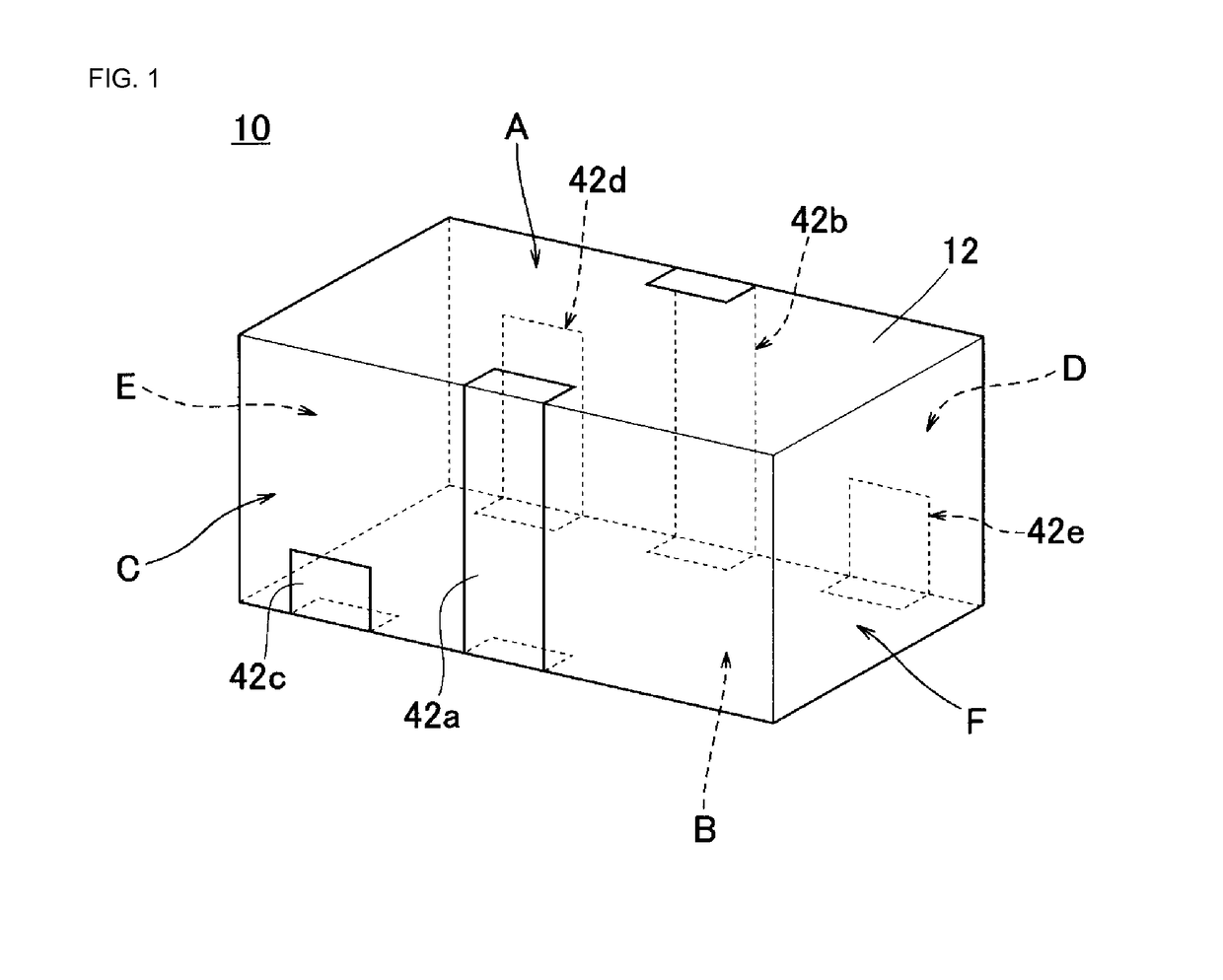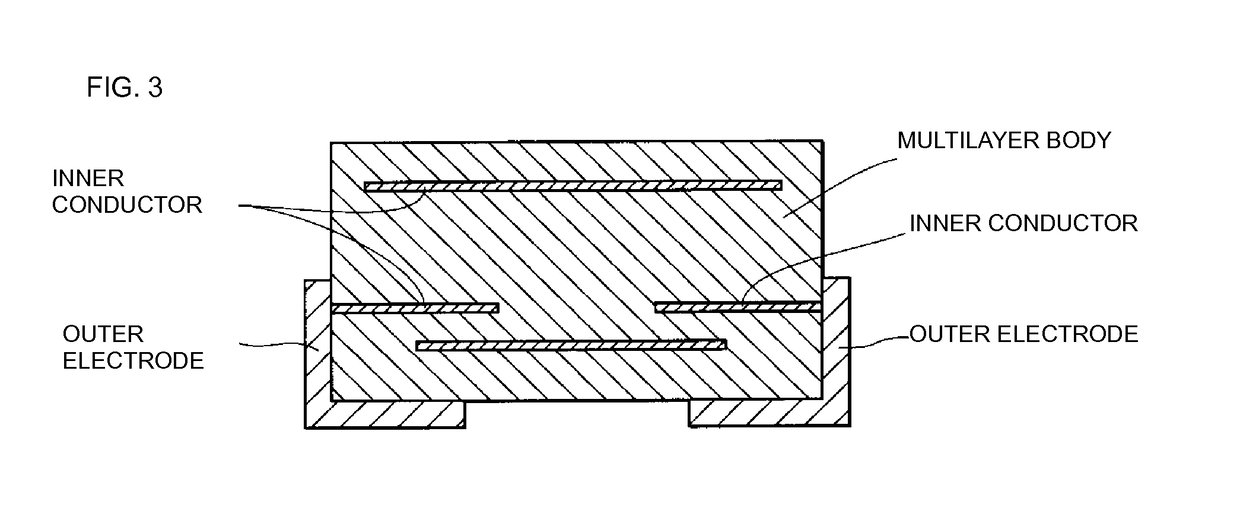Electronic component
a technology of electronic components and components, applied in the field of electronic components, can solve problems such as the degradation of flexibility in the design of impedances, and achieve the effect of reducing the influence of an outer electrode and high design flexibility
- Summary
- Abstract
- Description
- Claims
- Application Information
AI Technical Summary
Benefits of technology
Problems solved by technology
Method used
Image
Examples
Embodiment Construction
[0049]FIG. 1 illustrates a diplexer serving as an example of an electronic component according to the invention. An electronic component 10 includes a multilayer body 12. The multilayer body 12 is formed, for example, into a rectangular parallelepiped shape, and includes two rectangular principal surfaces (A-side and B-side) that are opposite to each other, a one-end-side side surface (C-side) and an another-end-side side surface (D-side) that are located at the sides of the two principal surfaces in the widthwise direction, and a one-end-side side surface (E-side) and an another-end-side side surface (F-side) that are located at the sides of the two principal surfaces in the lengthwise direction.
[0050]As illustrated in FIG. 2(A), the multilayer body 12 includes a first insulator layer 14 that is rectangular in shape. Two inner conductors 14a and 14b are formed on the first insulator layer 14. The inner conductor 14a is formed in an open ring shape on the first insulator layer 14 to...
PUM
| Property | Measurement | Unit |
|---|---|---|
| length | aaaaa | aaaaa |
| conductive | aaaaa | aaaaa |
| insulating | aaaaa | aaaaa |
Abstract
Description
Claims
Application Information
 Login to View More
Login to View More - R&D
- Intellectual Property
- Life Sciences
- Materials
- Tech Scout
- Unparalleled Data Quality
- Higher Quality Content
- 60% Fewer Hallucinations
Browse by: Latest US Patents, China's latest patents, Technical Efficacy Thesaurus, Application Domain, Technology Topic, Popular Technical Reports.
© 2025 PatSnap. All rights reserved.Legal|Privacy policy|Modern Slavery Act Transparency Statement|Sitemap|About US| Contact US: help@patsnap.com



